
by Tatiana Claudy
“What a musical city Petersburg is, in comparison to Moscow! For some time, I begin to love Petersburg more and more,” confessed Pyotr Ilyich Tchaikovsky, a great Russian composer. [1] Although he never lived there permanently, many important events in his life happened in this city. Today I am taking you on a journey to follow his footsteps in St. Petersburg, the former capital of the Russian Empire and my hometown.
Music was Tchaikovsky’s passion from his childhood: “He found such delight in playing that it was frequently necessary to drag him by force from the instrument [piano].” [2] Yet, the parents wanted him to be a lawyer. Thus, our journey’s first stop is at the big yellow building at the Fontanka River Embankment which housed in the 19th century the Imperial School of Jurisprudence. A diligent student of mandatory classes, young Pyotr also took piano lessons and was especially good at improvisation. Nevertheless, nobody recognized his genius. “His talent still attracted attention, but none of his friends thought seriously about the fame of the future composer.” [3] Moreover, his piano teacher claimed that Pyotr had no gift for music. Only the best friend, Aleksey Apukhtin (a future poet), foresaw the heyday of his talent. Later Apukhtin dedicated this poetry to Pyotr:
“I’m proud that I guessed the spark divine in you,
Back then it only faintly twinkled,
But now glows with so mighty light!” [4]
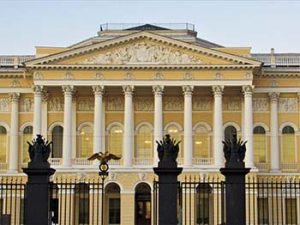
After the graduation, Tchaikovsky began his legal career at the Ministry of Justice of the Russian Empire. Yet he dreamed of becoming a musician. When the Russian Music Society opened classes in the Mikhailovsky Palace, 31-years old Tchaikovsky seized an opportunity: “I have enrolled in the freshly inaugurated Conservatory . . . Regardless of whether I become a famous composer or a poor teacher, my conscience will then be calm, and I won’t have the disagreeable right to grumble at Fate.” [5] In this building another facet of his talent – conducting the orchestra – has been revealed. A contemporary recalled, “Extraordinary delicate and shy, he conducted with a cheerful … a slightly playful smile. His gestures were smooth … And still he splendidly controlled the orchestra and choir.” [6] Later, when Tchaikovsky became one of the world’s most celebrated conductors, he conducted the orchestra on the opening night of the Carnegie Hall in New York.
 We continue our journey to visit the Museum of Theater and Music in the downtown, near the Nevsky Prospect. Here visitors can listen to rare recordings of Tchaikovsky’s music, for instance, his numerous romances – lyric pieces for both a voice and an instrument. He composed about 100 romances using lyrics of various poets, including his friend Aleksey Apukhtin. Visitors can also enjoy a wonderful display of costumes for his first ballet, “The Swan Lake.” The composer believed that “the beauty of life is that it is made up of alternating joy and sorrow, of the struggle between good and evil, of light and shade.” [7] No wonder that he liked the libretto (based on a German medieval legend): Prince Siegfried fall in love with Odette, turned into a swan by Rothbart, an evil sorcerer; Rothbart tricked Prince into the marriage proposal to his daughter, Odile (the Black Swan), who resembles Odette; finally, Prince conquered Rothbart to liberate his beloved Odette. Though it is not clear what lake inspired the composer for this masterpiece, it could be the swan lake near the town of Fussen (Germany).
We continue our journey to visit the Museum of Theater and Music in the downtown, near the Nevsky Prospect. Here visitors can listen to rare recordings of Tchaikovsky’s music, for instance, his numerous romances – lyric pieces for both a voice and an instrument. He composed about 100 romances using lyrics of various poets, including his friend Aleksey Apukhtin. Visitors can also enjoy a wonderful display of costumes for his first ballet, “The Swan Lake.” The composer believed that “the beauty of life is that it is made up of alternating joy and sorrow, of the struggle between good and evil, of light and shade.” [7] No wonder that he liked the libretto (based on a German medieval legend): Prince Siegfried fall in love with Odette, turned into a swan by Rothbart, an evil sorcerer; Rothbart tricked Prince into the marriage proposal to his daughter, Odile (the Black Swan), who resembles Odette; finally, Prince conquered Rothbart to liberate his beloved Odette. Though it is not clear what lake inspired the composer for this masterpiece, it could be the swan lake near the town of Fussen (Germany).
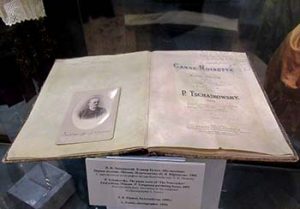 Now let’s look at the exhibit dedicated to Tchaikovsky’s last ballet, “The Nutcracker”: in the display case there is the clavier with the composer’s inscriptions. While listening to this fascinating music, it is difficult to imagine how hard was this composition for Tchaikovsky. He even disliked the libretto based on the fairy tale “The Nutcracker and the King of the Mice” by E. T. A. Hoffmann. Tchaikovsky complained, “While composing the ballet, I noticed my inspiration was tailing off.” [8] To complicate the matter, Marius Petipa, the choreographer, posed a challenge to Tchaikovsky: create for the Sugar Plum Fairy the music that would sound like drops of water from the fountain. The composer went on his tour in America, still trying to work on the ballet. On his way back, in Paris, he saw a new musical instrument, the celesta, which resembled a little piano and sounded like bells. This was the perfect instrument to play the music of the Sugar Plum Fairy! Tchaikovsky asked his publisher to buy the celesta and admonished him, “No one besides myself should hear the sounds of this wonderful instrument before it’s played in my works, where it will be used for the first time … Besides this, the Celesta will play a large role in my new ballet.” [9]
Now let’s look at the exhibit dedicated to Tchaikovsky’s last ballet, “The Nutcracker”: in the display case there is the clavier with the composer’s inscriptions. While listening to this fascinating music, it is difficult to imagine how hard was this composition for Tchaikovsky. He even disliked the libretto based on the fairy tale “The Nutcracker and the King of the Mice” by E. T. A. Hoffmann. Tchaikovsky complained, “While composing the ballet, I noticed my inspiration was tailing off.” [8] To complicate the matter, Marius Petipa, the choreographer, posed a challenge to Tchaikovsky: create for the Sugar Plum Fairy the music that would sound like drops of water from the fountain. The composer went on his tour in America, still trying to work on the ballet. On his way back, in Paris, he saw a new musical instrument, the celesta, which resembled a little piano and sounded like bells. This was the perfect instrument to play the music of the Sugar Plum Fairy! Tchaikovsky asked his publisher to buy the celesta and admonished him, “No one besides myself should hear the sounds of this wonderful instrument before it’s played in my works, where it will be used for the first time … Besides this, the Celesta will play a large role in my new ballet.” [9]
 Now we will go to the Theater Square to look at the Maryinsky Theater where “The Nutcracker” was performed for the first time on December 18, 1892. There were rumors in the city that the composer prepared a surprise for the public. When the Sugar Plum Fairy appeared on the stage and began her dance, the audience was stunned by an unknown instrument’s celestial sounds, as though little glass balls dropped on a crystal plate. Such was a glorious debut of the celesta in the ballet. Tchaikovsky, a great admirer of Russian folk tunes, included the Russian dance in the ballet. To describe through music such dwellers of the Kingdom of Sweets as chocolate, coffee, and tea, he created dances based on traditional Spanish, Arabic, and Chinese tunes respectively. The opening night was a great success – even Emperor Alexander III was very pleased and complimented the composer. Regardless of some harsh critique, “The Nutcracker” became a sensation in the musical life of the capital.
Now we will go to the Theater Square to look at the Maryinsky Theater where “The Nutcracker” was performed for the first time on December 18, 1892. There were rumors in the city that the composer prepared a surprise for the public. When the Sugar Plum Fairy appeared on the stage and began her dance, the audience was stunned by an unknown instrument’s celestial sounds, as though little glass balls dropped on a crystal plate. Such was a glorious debut of the celesta in the ballet. Tchaikovsky, a great admirer of Russian folk tunes, included the Russian dance in the ballet. To describe through music such dwellers of the Kingdom of Sweets as chocolate, coffee, and tea, he created dances based on traditional Spanish, Arabic, and Chinese tunes respectively. The opening night was a great success – even Emperor Alexander III was very pleased and complimented the composer. Regardless of some harsh critique, “The Nutcracker” became a sensation in the musical life of the capital.
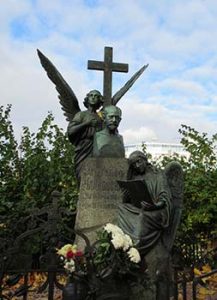 Looking forward to future accomplishments, 53-old Tchaikovsky shared with friends, “I feel I shall live a long time.” [10] But six days later the whole country was shocked by his sudden death from cholera. Emperor Alexander III payed for the composer’ funeral which was “so grand and magnificent as only tsars in Russia have been buried.” [11] Tchaikovsky was buried at the most well-known cemetery of St. Petersburg – the Tikhvin Cemetery at the Alexander Nevsky Monastery. The tombstone includes the bust of the composer and figures of two angels: one holds the Orthodox cross, and another weeps over the open book of music. I visited this cemetery many times, in different seasons, and always saw fresh flowers at the tombstone of Tchaikovsky. Truly, the great composer continues to live in hearts of people inspired and enlighten by his music.
Looking forward to future accomplishments, 53-old Tchaikovsky shared with friends, “I feel I shall live a long time.” [10] But six days later the whole country was shocked by his sudden death from cholera. Emperor Alexander III payed for the composer’ funeral which was “so grand and magnificent as only tsars in Russia have been buried.” [11] Tchaikovsky was buried at the most well-known cemetery of St. Petersburg – the Tikhvin Cemetery at the Alexander Nevsky Monastery. The tombstone includes the bust of the composer and figures of two angels: one holds the Orthodox cross, and another weeps over the open book of music. I visited this cemetery many times, in different seasons, and always saw fresh flowers at the tombstone of Tchaikovsky. Truly, the great composer continues to live in hearts of people inspired and enlighten by his music.
My short journey is completed. While following the footsteps of Tchaikovsky, I learn more about him and his music which contributed to making St. Petersburg the cultural capital of Russia. I hope that this journey enriched your knowledge about this great composer and inspired you to visit this splendid musical city!
Footnotes:
[1] Correspondence with Nadezhda von Meck (translation by Tatiana Claudy)
[2] The Life & Letters of Peter Ilich Tchaikovsky by Modest Chaikovskii
[3] V. N. Gerard. Tchaikovsky at the Imperial School of Jurisprudence (translation by Tatiana Claudy)
[4] Aleksey Apukhtin. To Tchaikovsky (translation by Tatiana Claudy)
[5] Correspondence with Aleksandra Davydova. Letter 63
[6] Shteinberg L. P. Memorable meetings (translation by Tatiana Claudy)
[7] Correspondence with Nadezhda von Meck
[8] Correspondence with Modest Tchaikovsky. Letter 4425
[9] Correspondence with Pyotr Jurgenson. Letter 4459
[10] The Life & Letters of Peter Ilich Tchaikovsky by Modest Chaikovskii
[11] Bukinik M. E. October 25, 18293 (translation by Tatiana Claudy)
If You Go:
Visas for Russia – (Most foreigners need visas to visit Russia.)
St. Petersburg State Museum of Theatre and Music
The Tikhvin Cemetery at the Alexander Nevsky Monastery (The cemetery is located across the subway station Alexander Nevsky Square. Adult tickets cost $7 per person. Tchaikovsky’s tombstone is in the 19th century Necropolis.)
Recommended Theaters Performing Tchaikovsky’s ballets and operas:
Recommended Concert Halls Performing Tchaikovsky’s music:
To Learn More about Tchaikovsky:
- The Life & Letters of Peter Ilich Tchaikovsky
by Modest Chaikovskii
- Tchaikovsky
(1970) – a Russian movie with English subtitles
About the author:
Tatiana Claudy, originally from St. Petersburg, Russia, lives with her family in the USA. Her passions include writing, traveling, and making photos of fascinating places. As a freelance writer, Tatiana had written for various printed and online publications. Her travel articles had been published on Go Overseas, Matador Network, and My Itchy Travel Feet websites.
All photos by Tatiana Claudy:
- Imperial School of Jurisprudence
- Mikhailovsky Palace
- Clavier for “The Nutcracker” Ballet
- Costumes for “The Swan Lake” Ballet
- Maryinsky Theater
- Tombstone of Tchaikovsky at the Tikhvin Cemetery



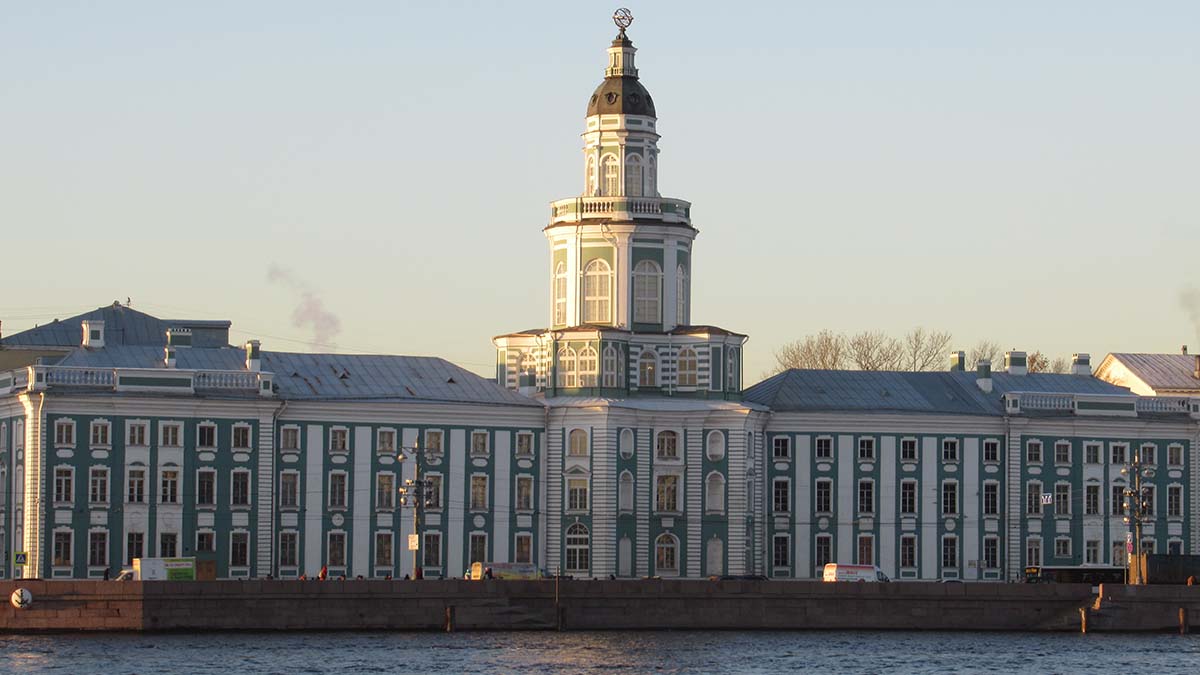
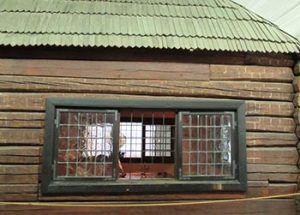
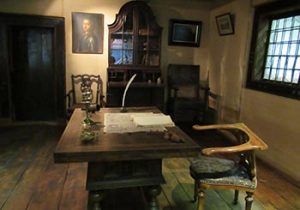



 In my opinion, the most fascinating are four rooms whose walls and ceilings are completely decorated with Dutch porcelain tile (about 28,000 pieces). These rooms are unique and can be seen only in the Menshikov Palace. Dutch porcelain tile was very expensive: even in Holland, where it has been produced, this tile was used to decorate only panels. Yet in the Menshikov Palace there are even several stoves decorated with Dutch tile. Peter the Great was very pleased with the luxury of the Menshikov Palace because he considered this building and its interiors to be a proof that new Russia was in no way inferior to any European country.
In my opinion, the most fascinating are four rooms whose walls and ceilings are completely decorated with Dutch porcelain tile (about 28,000 pieces). These rooms are unique and can be seen only in the Menshikov Palace. Dutch porcelain tile was very expensive: even in Holland, where it has been produced, this tile was used to decorate only panels. Yet in the Menshikov Palace there are even several stoves decorated with Dutch tile. Peter the Great was very pleased with the luxury of the Menshikov Palace because he considered this building and its interiors to be a proof that new Russia was in no way inferior to any European country.



 I found Raskolnikov’s house, a big yellow apartment building, on the corner of Stolyarny Lane, 5, and Grazhdanskaya Street, 19. This rectangular structure with an inner yard has been built according to a typical architectural design of the 19th century: since the land was expensive, architects had to create the biggest possible house to occupy the lot. In 1970s, after remodeling, this “high, five-storied house” described by Dostoyevsky was turned into a four-storied one. [5] However, there is still the loft where Raskolnikov rented a room: “It was a tiny cupboard of a room about six paces in length … and it was so low-pitched that a man of more than average height … felt every moment that he would knock his head against the ceiling.” [6] The entrance to the house is locked to prevent tourists and literary journeys’ lovers, like myself, from disturbing the tenants.
I found Raskolnikov’s house, a big yellow apartment building, on the corner of Stolyarny Lane, 5, and Grazhdanskaya Street, 19. This rectangular structure with an inner yard has been built according to a typical architectural design of the 19th century: since the land was expensive, architects had to create the biggest possible house to occupy the lot. In 1970s, after remodeling, this “high, five-storied house” described by Dostoyevsky was turned into a four-storied one. [5] However, there is still the loft where Raskolnikov rented a room: “It was a tiny cupboard of a room about six paces in length … and it was so low-pitched that a man of more than average height … felt every moment that he would knock his head against the ceiling.” [6] The entrance to the house is locked to prevent tourists and literary journeys’ lovers, like myself, from disturbing the tenants. As I walked around the house, I saw the commemorative high relief of Dostoyevsky and the plaque with the inscription: “Raskolnikov’s House. The tragic lives of people of this neighborhood of Petersburg served for Dostoyevsky as a foundation of his passionate sermon of goodness for the entire humanity.” [7] There is an interesting tradition in St. Petersburg: on the first Saturday of July (events described in Crime and Punishment happened in the beginning of July), Dostoyevsky’s enthusiasts gather in this neighborhood to celebrate Dostoyevsky Day. Many bring flowers to place at the bottom of this relief, but some put here … axes, because Raskolnikov used an axe as his murder weapon. (Another reason for tenants of this house to keep the entrance door locked!)
As I walked around the house, I saw the commemorative high relief of Dostoyevsky and the plaque with the inscription: “Raskolnikov’s House. The tragic lives of people of this neighborhood of Petersburg served for Dostoyevsky as a foundation of his passionate sermon of goodness for the entire humanity.” [7] There is an interesting tradition in St. Petersburg: on the first Saturday of July (events described in Crime and Punishment happened in the beginning of July), Dostoyevsky’s enthusiasts gather in this neighborhood to celebrate Dostoyevsky Day. Many bring flowers to place at the bottom of this relief, but some put here … axes, because Raskolnikov used an axe as his murder weapon. (Another reason for tenants of this house to keep the entrance door locked!) After having found the house of the murderer, I need to find the house of his victim, an old woman, a notorious pawnbroker Alyona Ivanovna. The book presented her dwelling place as “a huge house which on one side looked on to the canal, and on the other into the street.” [8] The building fitting this description is located on the Griboedov Canal Quay, 104: one long side stretches along the Griboedov Canal, another – along Srednyaya Podyacheskaya Street, and the short side looks into Rimsky-Korsakov Street. Dostoyevsky gave another key for locating the old woman’s house – the number of steps that Raskolnikov made while walking there: “He had not far to go; he knew indeed how many steps it was from the gate of his lodging house: exactly seven hundred and thirty.” [9] Dostoyevsky, as a military engineer, was used to measuring distances in steps, and, knowing his obsession with precise details, we can presume that the writer gave us the correct number of steps.
After having found the house of the murderer, I need to find the house of his victim, an old woman, a notorious pawnbroker Alyona Ivanovna. The book presented her dwelling place as “a huge house which on one side looked on to the canal, and on the other into the street.” [8] The building fitting this description is located on the Griboedov Canal Quay, 104: one long side stretches along the Griboedov Canal, another – along Srednyaya Podyacheskaya Street, and the short side looks into Rimsky-Korsakov Street. Dostoyevsky gave another key for locating the old woman’s house – the number of steps that Raskolnikov made while walking there: “He had not far to go; he knew indeed how many steps it was from the gate of his lodging house: exactly seven hundred and thirty.” [9] Dostoyevsky, as a military engineer, was used to measuring distances in steps, and, knowing his obsession with precise details, we can presume that the writer gave us the correct number of steps. Now I had to take the subway to reach the Dostoyevsky Museum located on Kuznechny Lane, 5. Dostoyevsky rented twice apartments in this building: in 1846, at the beginning of his literary career, and in 1878, three years before his death. The main attraction of the museum is Dostoyevsky’s cabinet where he had written his novel Karamazov Brothers. On the massive desk there is an issue of the magazine, Russky Vestnik, with an extract from Karamazov Brothers, Dostoyevsky’s letters, and one of his favorite novels, Eugene Onegin by Alexander Pushkin. Everything on the table is at the particular place because the writer “paid a great attention to this pedantic order” [13]. There are two candlesticks with candles because Dostoyevsky disliked table lamps and preferred to write by candlelight. Since the writer worked a lot, being constantly in dire need for money because of his gambling problem, he often slept in his cabinet on the sofa. Above the sofa there is a reproduction of Dostoyevsky’s favorite picture, “The Sistine Madonna” by Raphael, presented by Sofia Tolstoy (Leo Tolstoy’s wife). Anna, Dostoyevsky’s widow, wrote: “How many times, during the last year of Fyodor Mikhailovich’s life, I found him standing in front of this great picture in such a deep adoration that he did not hear how I had entered.” [14] On February 9, 1881, Dostoyevsky died on the sofa in his cabinet.
Now I had to take the subway to reach the Dostoyevsky Museum located on Kuznechny Lane, 5. Dostoyevsky rented twice apartments in this building: in 1846, at the beginning of his literary career, and in 1878, three years before his death. The main attraction of the museum is Dostoyevsky’s cabinet where he had written his novel Karamazov Brothers. On the massive desk there is an issue of the magazine, Russky Vestnik, with an extract from Karamazov Brothers, Dostoyevsky’s letters, and one of his favorite novels, Eugene Onegin by Alexander Pushkin. Everything on the table is at the particular place because the writer “paid a great attention to this pedantic order” [13]. There are two candlesticks with candles because Dostoyevsky disliked table lamps and preferred to write by candlelight. Since the writer worked a lot, being constantly in dire need for money because of his gambling problem, he often slept in his cabinet on the sofa. Above the sofa there is a reproduction of Dostoyevsky’s favorite picture, “The Sistine Madonna” by Raphael, presented by Sofia Tolstoy (Leo Tolstoy’s wife). Anna, Dostoyevsky’s widow, wrote: “How many times, during the last year of Fyodor Mikhailovich’s life, I found him standing in front of this great picture in such a deep adoration that he did not hear how I had entered.” [14] On February 9, 1881, Dostoyevsky died on the sofa in his cabinet. Dostoyevsky was buried at one of the most famous cemeteries of St. Petersburg – the Tikhvin Cemetery at the Alexander Nevsky Monastery. The tombstone consists of the Orthodox cross and Dostoyevsky’s bust placed on two books. The cross is adorned by a garland of thorns symbolizing the writer’s sacrifices and hardships. The bust bears a resemblance to the writer because Dostoyevsky’s death mask was used for its creation. Two books, representing two parts of the Bible, symbolize his devotion to the Russian Orthodox Church; additionally, books symbolize his literary career. The tombstone’s inscription in Old Church Slavonic language is a quote from John 12:24: “…unless a grain of wheat falls into the ground and dies, it remains alone; but if it dies, it produces much grain.” This tomb is one of the most visited, and it is often adorned with fresh flowers.
Dostoyevsky was buried at one of the most famous cemeteries of St. Petersburg – the Tikhvin Cemetery at the Alexander Nevsky Monastery. The tombstone consists of the Orthodox cross and Dostoyevsky’s bust placed on two books. The cross is adorned by a garland of thorns symbolizing the writer’s sacrifices and hardships. The bust bears a resemblance to the writer because Dostoyevsky’s death mask was used for its creation. Two books, representing two parts of the Bible, symbolize his devotion to the Russian Orthodox Church; additionally, books symbolize his literary career. The tombstone’s inscription in Old Church Slavonic language is a quote from John 12:24: “…unless a grain of wheat falls into the ground and dies, it remains alone; but if it dies, it produces much grain.” This tomb is one of the most visited, and it is often adorned with fresh flowers.
